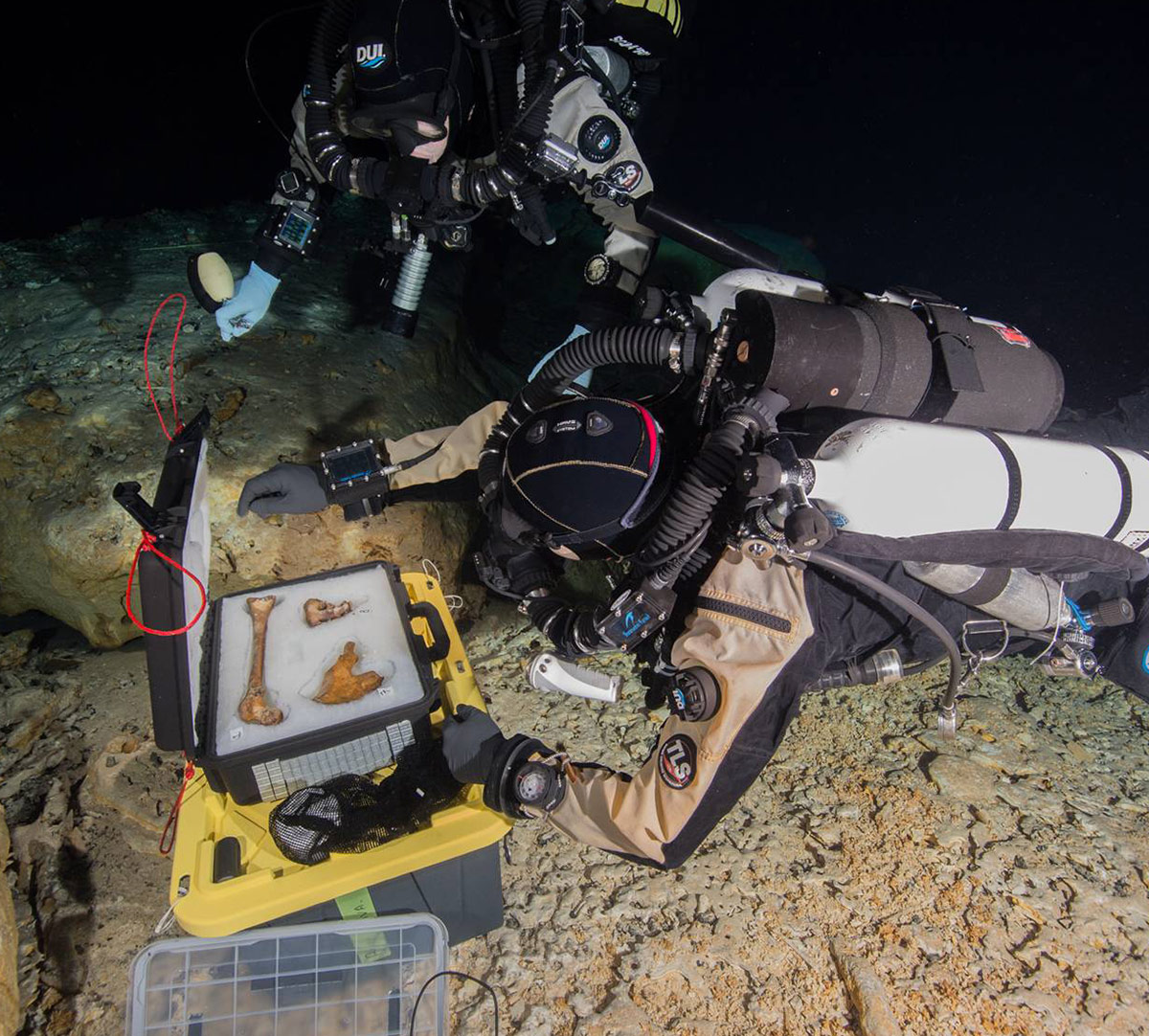In 2014 and 2016 we collected accessible bones of the human skeleton HN5/48, known as “Naia” under permits from Mexico’s Consejo de Arqueologia. We intend to seek more elements in the future, looking in deep crevices and dark holes, but to date, we have recovered 98 bone elements and 30 teeth. These include a complete skull and all complete bones of the arms and left leg, most ribs and vertebrae, and many of the bones of both hands. Most exciting, they include an almost-complete pelvis and both a complete leg and arm—both are “firsts” among paleoamerican females. These enabled us to accurately compute Naia’s limb proportions and determine if she had yet given birth.
AGE
Closure of growth plates in Naia’s bones, eruption and formation of her teeth, and cell structure of her rib bone all suggest that she died at around 15-16 years of age.
STATURE
The length of Naia’s femur (thigh bone) indicates she stood about 5 feet tall. Diameter of the head of the same bone computes to a potential weight of 110 lb, but the narrowness of most of her bones and indications of episodic nutritional stress cause us to conclude she was in fact much lighter.
INJURIES AND CAUSE OF DEATH
Naia’s bones show evidence of at least two traumatic events, one while she lived and another at her death. Both bones of her left forearm show evidence of healed fractures. The radius (the outer bone of the forearm when the hand is palm-up) was spiral fractured, indicating a twisting and pulling action perhaps caused by a parent or assailant. The ulna fracture is less distinct but appears to represent a similar trauma.
Her pelvis is broken in two places, the fracture across the upper limb of the pubic bone showing jagged edges. Jagged edges indicate a break in fresh bone, not bone that has lost much of its protein infrastructure, so this break probably occurred when she fell more than 100 feet into a shallow pool on the floor of Hoyo Negro. This fall, or subsequent drowning while debilitated or unconscious, almost certainly caused Naia’s death.
MATERNITY
Multiple lines of evidence show us that Naia had given birth at least once during her short life. Shallow pits on the posterior surface of the pubic bone and poorly-healed lacerations in the sacrum both resulted from the birthing process. The sacral damage, in particular, were caused by a child’s head being forced through the birth canal of a pelvis that was not yet broad enough to accommodate it.


















